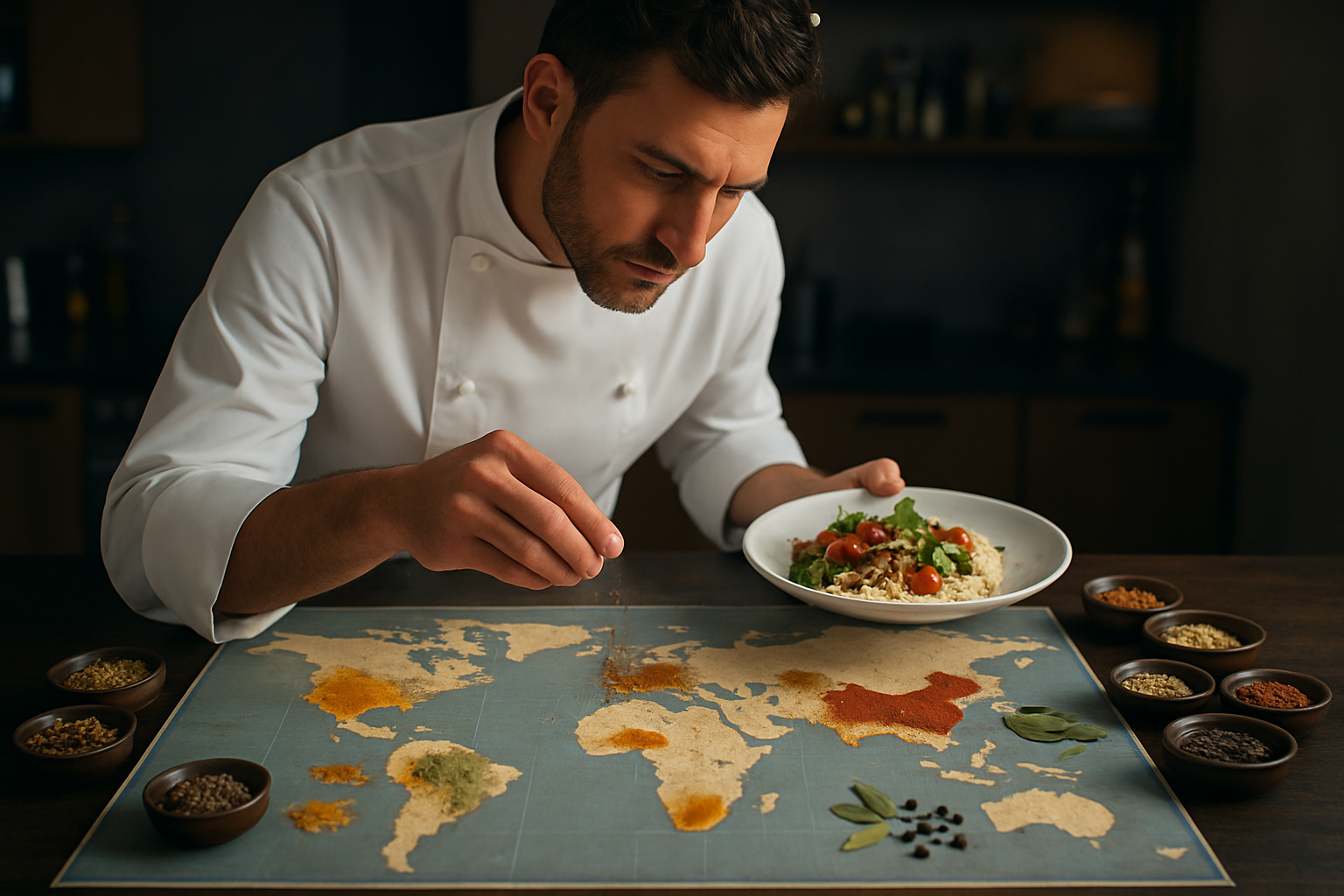Culinary Cartography: Mapping Flavor Profiles Across Cultures
Embark on a global taste adventure as we explore the fascinating world of flavor mapping. This innovative approach to understanding cuisine transcends borders, offering a unique perspective on how different cultures intertwine through their distinctive taste palettes. Discover how chefs and food scientists are revolutionizing the way we perceive and create dishes by charting the intricate connections between ingredients and flavors across continents.

Cultural Flavor Fingerprints: Unveiling Regional Tastes
Every culture has its own unique flavor fingerprint, a result of centuries of culinary evolution shaped by geography, climate, and tradition. By mapping these flavor profiles, we can see how different regions have developed their distinctive tastes. For example, Mediterranean cuisine often features olive oil, tomatoes, and herbs like basil and oregano, creating a flavor profile that’s markedly different from the soy sauce, ginger, and sesame oil combinations common in East Asian cooking. Understanding these cultural flavor fingerprints allows chefs to create fusion dishes that respect and celebrate diverse culinary traditions.
Bridging Cultures Through Flavor Bridges
One of the most exciting aspects of culinary cartography is the discovery of “flavor bridges” – ingredients or flavor compounds that connect seemingly disparate cuisines. For instance, cilantro serves as a flavor bridge between Mexican and Indian cuisines, while fermented foods like kimchi and sauerkraut connect Korean and German flavor profiles. By identifying these bridges, chefs can create innovative dishes that seamlessly blend different culinary traditions, offering diners a truly global experience on a single plate.
The Role of Terroir in Flavor Mapping
Terroir, a concept traditionally associated with wine, is increasingly being applied to other ingredients in the realm of culinary cartography. The idea that the environment in which an ingredient is grown influences its flavor is crucial in understanding regional taste differences. For example, the mineral-rich soil of volcanic regions imparts a unique flavor to crops grown there, creating a distinct taste profile. By mapping these terroir-influenced flavors, chefs can create dishes that truly capture the essence of a specific place, offering diners a taste of geography.
AI and Big Data: The Future of Flavor Exploration
As we move into the future, artificial intelligence and big data are set to revolutionize culinary cartography. By analyzing vast amounts of data on flavor compounds, cultural preferences, and successful dish combinations, AI can suggest novel flavor pairings and help chefs create entirely new taste experiences. This technology-driven approach to flavor exploration opens up endless possibilities for culinary innovation, pushing the boundaries of what’s possible in the kitchen and on our plates.
Flavor Mapping Tips & Facts
• The human tongue can detect over 1 trillion flavors
• Umami, the fifth taste, was only officially recognized in 2002
• Flavor perception changes with age, affecting our taste preferences
• Certain flavors, like vanilla, are universally loved across cultures
• The Maillard reaction, responsible for browned food flavors, occurs in all cuisines
• Spiciness is not a taste but a pain response detected by the trigeminal nerve
Conclusion
Culinary cartography is more than just a tool for chefs and food scientists; it’s a gateway to understanding the rich tapestry of global cuisines. By mapping flavors across cultures, we not only enhance our culinary creations but also foster a deeper appreciation for the diversity of human taste experiences. As we continue to explore and map the world of flavors, we open up new possibilities for cross-cultural understanding and gastronomic innovation, proving that food truly is a universal language that connects us all.





